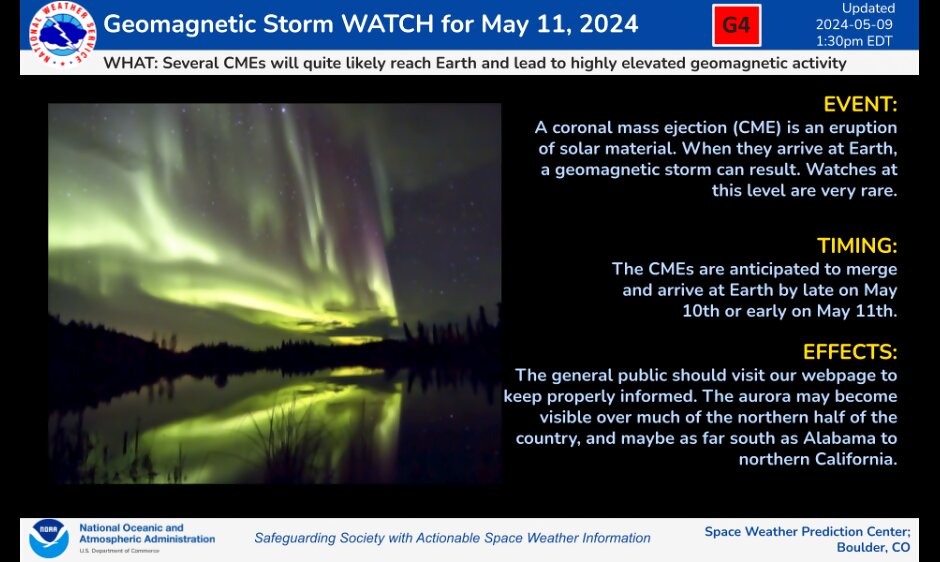
views
A key scientific agency in the US issued a severe geomagnetic storm warning on Thursday, marking the first such alert in nearly two decades that can impact various electronic systems on Earth.
The US National Oceanic and Atmospheric Administration’s (NOAA) alert came as it detected a powerful solar storm brewing in outer space. The warning, classified as a Severe (G4) Geomagnetic Storm Watch, underlined the potential risks to crucial infrastructure including power grids, communication networks, and satellite operations. This event could also disrupt electronic devices like GPS, the American agency said.
“NOAA’s Space Weather Prediction Center (SWPC) — a division of the National Weather Service — is monitoring the sun following a series of solar flares and coronal mass ejections (CMEs) that began on May 8. Space weather forecasters have issued a Severe (G4) Geomagnetic Storm Watch for the evening of Friday, May 10. Additional solar eruptions could cause geomagnetic storm conditions to persist through the weekend,” the SWPC said in a press statement.
What is coronal mass ejections?

Earlier, several solar flares and coronal mass ejections (CMEs) were observed since May 8, prompting heightened vigilance from NOAA’s Space Weather Prediction Center (SWPC). US officials have stressed the potential for disruptions to persist through the weekend. “A large sunspot cluster has produced several moderate to strong solar flares since Wednesday at 5:00 am ET. At least five flares were associated with CMEs that appear to be Earth-directed. SWPC forecasters will monitor NOAA and NASA’s space assets for the onset of a geomagnetic storm,” the statement added.
Geomagnetic storms
Geomagnetic storms, caused by CMEs directed towards Earth, pose significant risks to infrastructure in near-Earth orbit and the planet’s surface. NOAA’s warning extended beyond technical disruptions, underlining the potential for widespread impacts on navigation, radio, and satellite operations. There are concerns about potential internet outages, a critical aspect of modern communication infrastructure.
“CMEs are explosions of plasma and magnetic fields from the sun’s corona. They cause geomagnetic storms when they are directed at Earth. Geomagnetic storms can impact infrastructure in near-Earth orbit and on Earth’s surface, potentially disrupting communications, the electric power grid, navigation, radio, and satellite operations,” the US agency said.
Despite the looming threat, NOAA assured that protective measures were being implemented, with operators of vulnerable systems notified to take appropriate precautions. However, the agency also acknowledged the potential for visually stunning auroras, which may be visible in regions as far south as Alabama and Northern California.
This event harkens back to a similar event in January 2005, when Earth experienced the highest radiation in five decades due to a severe geomagnetic storm, according to The Daily Mail. The rapid onset of this storm, peaking within just 15 minutes, caught scientists off guard and caused widespread disruptions to communication systems.


















Comments
0 comment